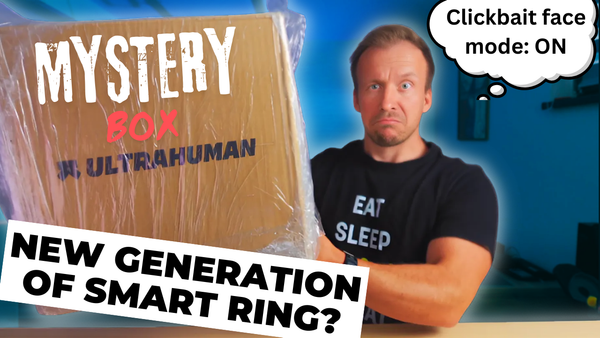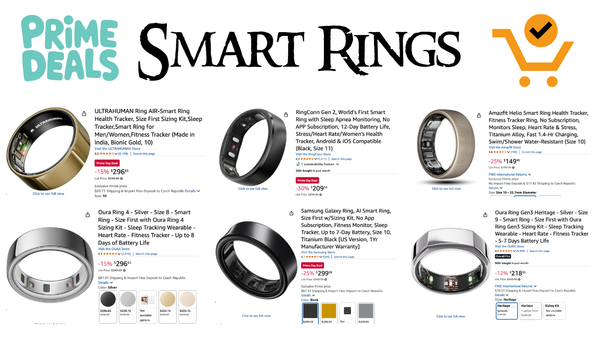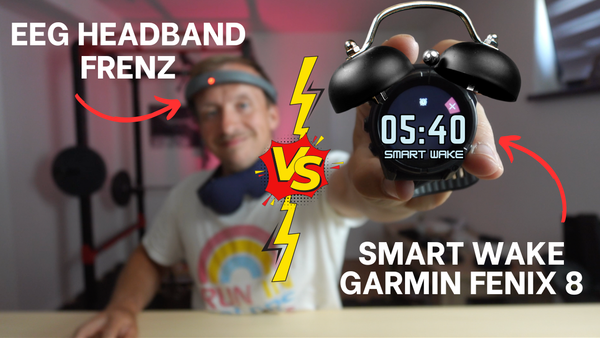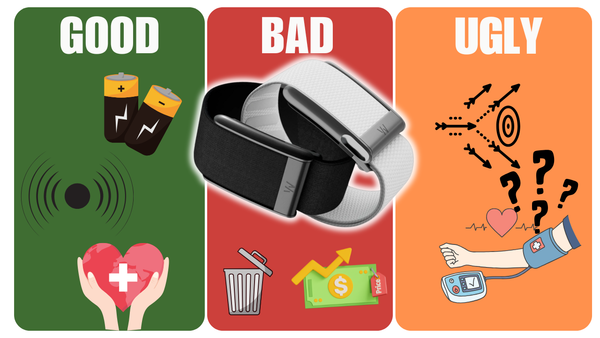Ultrahuman Ring — first impressions: finally Oura alternative?
Ultrahuman Ring R1 is another smart ring that attacks the position of the so far number one, Oura Ring GEN3. In this article, I will touch…
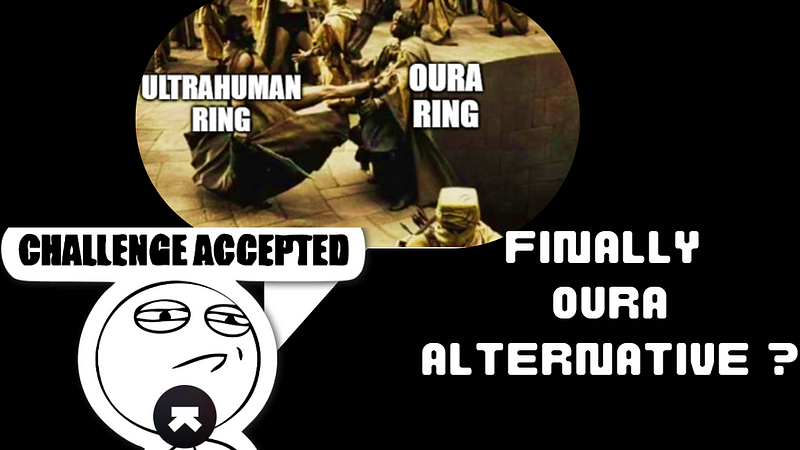
Ultrahuman Ring R1 is another smart ring that attacks the position of the so far number one, Oura Ring GEN3. In this article, I will touch on the following topics:
- Delivery — how I ordered, etc.
- Calibration period — the first 14 days
- HW — how do I see the ring body and charger
- SW — apps and other tools
- Evaluation
FYI: this article is the “First Impressions” type, i.e. I am evaluating it after a short period of time, but in order for my claims to have relevance, I have completed a so-called calibration period (in this case 15 days).
Expect a “full version” review in the future and also a direct comparison with the Oura Ring 3 🤼♂️
I am also planning to publish an article about testing of the use together R1+M1 (CGM sensor).
Delivery
Ordering the ring is possible directly on the Ultrahuman website. As usual, in the first place, you will be given a sizing kit, based on which you will choose the size you want and the colour you want.
The sizing kit is usually free of charge, however, with Ultrahuman it was necessary to pay VAT, but it depends on your destination country. Same for the ring itself. Currently, they ship within 4–6 weeks from size submission.
👀 I think it is important to highlight the context of testing this product. I am currently a long-time owner of an Oura ring GEN3, and a Circular Ring and RingConn owner for several months. Thus, all the relevant smart rings on the market. This gives me a good “background” and comparison for sharing an adequate test and review.
HW
The Ultrahuman ring arrived in a compact box that is very similar to the one RingConn arrived in. Judge for yourself based on the gallery below. Included, of course, is a charger in the form of a square stand and also a USB-A -USB-C cable.
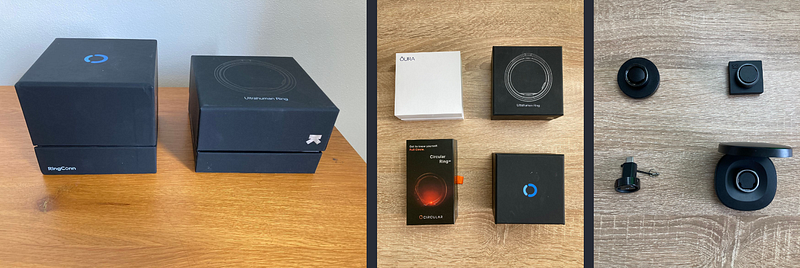
The surface of the ring
My first time with the ring was surprisingly pleasant, and I’d say the smoothness of the ring’s internal surface is the best of any smart ring I’ve experienced so far. I give some points to the R1 for the certain uniformity of the inside of the ring. For instance, the inside surface od Oura is slightly disturbed by the three small “bubbles” that protect the surface of the sensors. The R1 has only one such bubble, which, moreover, protrudes on the surface absolutely minimally.
I also like the outside surface, to be honest. I have the Cyber Grey variant, which is matte, which I subjectively better than my glossy Oura (Oura also offers a matte version — Stealth, but it is pretty expensive ≈ 419 EUR). The upper part of the outer shell is dominated by a decent protrusion with a rather interesting grid structure. It’s a matter of preference, but I personally like this element. At the same time, the protrusion is a clear indicator of the correct position of the ring on the finger.
On the very first day, I experimented a bit with the ring in the gym, as Ultrahuman boasted in its promotional materials about the high durability of the surface (consisting of Fighter Jet grade titanium with a tungsten carbide coating). I took away two insights from these experiments:
- Current sizes of smart rings are simply not designed to be used in strength training, calisthenics, etc. It is not at all comfortable for certain exercises.
- Ultrahuman is definitely not scratchproof, which I confronted the customer service (which is btw possible directly in the app including pictures 👍) and was recommended to polish it. I didn’t do that, but the ring actually got polished through normal use, touching the clothes etc.
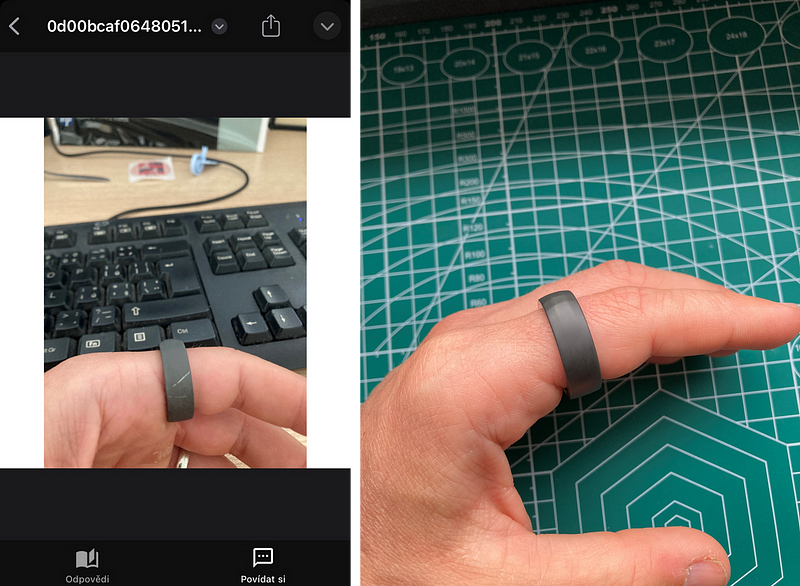
Charger
Ultrahuman has chosen the same concept as Oura, a wireless charger in a similar form as Oura. To differentiate a bit, the charger is square, the LED is placed in the center of the charger, and they used purple and white for the color scheme. It bothers me a bit that the charger emits light even when the ring is not attached.
Battery
Evaluating battery life after short-term use is risky, as each new firmware update for these products can have a significant impact on battery performance, either positive or negative. In addition, it is not possible to predict exactly how a battery will behave after a period of time and exposure to various conditions such as temperature, cold or heavy use, and factors that typically affect battery life.
Ultrahuman says, that the battery life is about 4–6 days. So far I would say more likely four days, but I like I said, one new firmware can change this and I have one update that should improve battery life just received. So, I will elaborate more on battery in future articles.
Size
With the R1 I aimed for my left index finger, where I primarily wear the Oura ring. Oddly enough, the size I consider equivalent to my Oura ring size 10 is Ultrahuman in size 9.
Sensors
The classic sensor lineup consists of an accelerometer, thermometer, infrared, red and green optical sensors.
HW [-] & [+]
I’ll get into a deeper analysis as part of a proper review. For now, let’s get to the pros and cons under first impression.
[+] 👍
- pleasantness of material
- matt surface
- “automatic” polishability of scratches
- the compactness of the “Oura level” ring
[-] 👎
- susceptibility to scratches
- charger LED still emits the light
SW
As I mentioned in the comparison article below, the Ultrahuman app has been available for download (both iOS and Android) for quite some time now, thanks in large part to the M1 product (CGM sensor) that the app has supported from the beginning.
https://medium.com/@fitnesator/oura-3-vs-circular-vs-ultrahuman-b0f0e7db3864
This indicated to me a certain good readiness of the mobile app, though of course in the general concept of an app originally designed for the M1. The R1 has its own, new, tab. There are 5 tabs in total:
- A home “common” tab — for the day with the ability to scroll to previous days.
- Ring R1 — similar to the default tab, data for the day containing a section for movement (Movement Index), recovery (Recovery Score), and sleep (Sleep Index), as well as isolated metrics: heart rate (HR), temperature, HRV, RHR, ring battery and a section for information and communication (Performance Coach, FAQs, Support).
- CGM sensor M1 — separate tab for data from CGM sensor M1.
- Educational/Content tab — audio and video for meditation, workout, and sleep.
- Settings — profile information, notification settings, etc.
I am attaching the gallery below for better visualization.
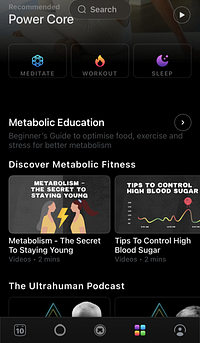
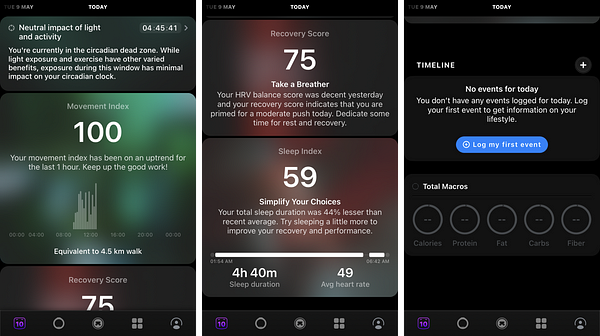
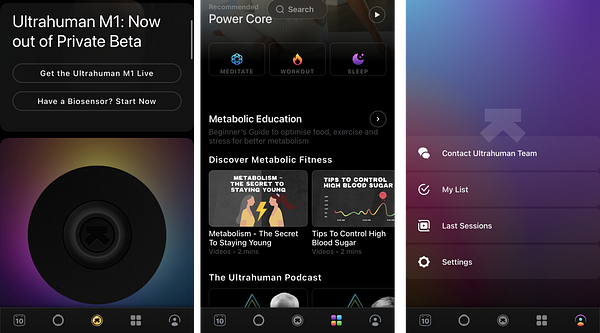
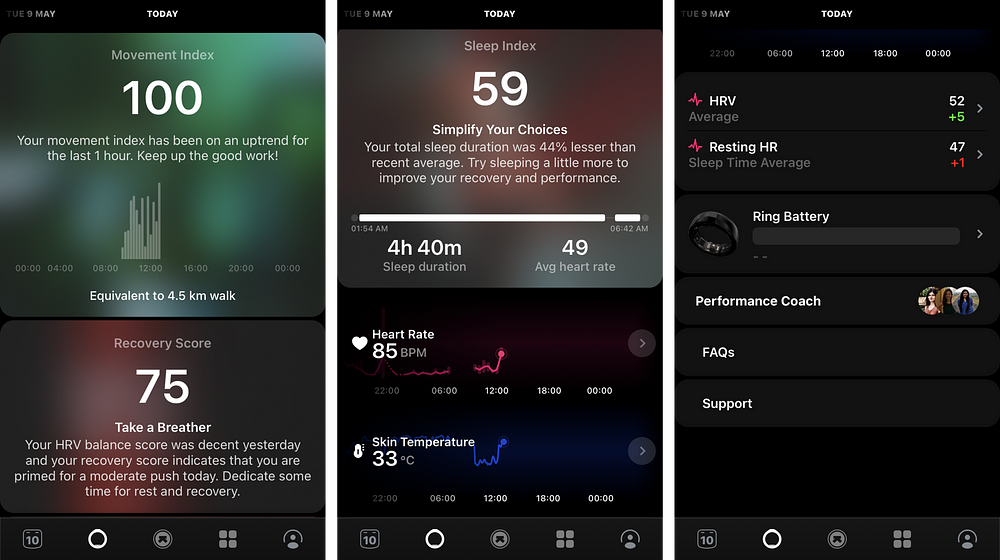
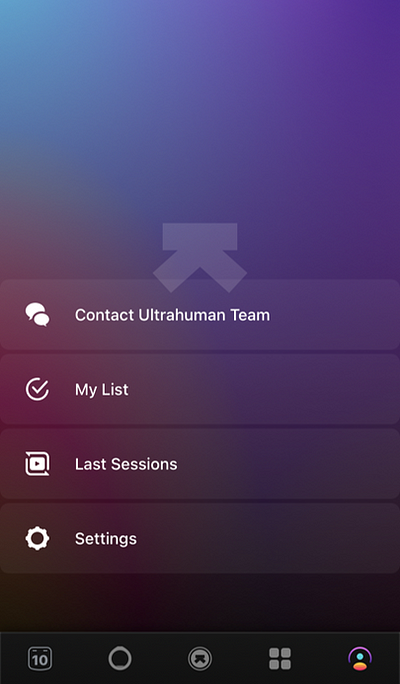
All tabs of the app
For the purposes of this article, I will primarily look at the above-mentioned sections for R1, i.e. general movement & activity, recovery, and sleep.
Activity/Movement Index
Ultrahuman does not now work with isolated activities and thus does not have, for example, AAD (Automatic Activity Detection) like Oura. This doesn’t bother me personally, on the contrary, I find it a bit annoying to manually confirm exactly what activity it was in the case of Oura.
Instead, R1 offers the following metrics:
- Steps,
- MET — this is an interesting unit that gives the intensity of activity over time. The reference is 1 MET, which represents a sesenal at rest. For example, fast walking has a value of 6 MET, i.e. if you spend 30 min fast walking, it would be 6 MET × 30 min = 180 MET/min,
- active hours,
- calories [KCal],
- activity frequency in MET/min over the last week.
Based on the metrics above, it calculates a summary score of 0–100 Movement Index. All the above metrics are enriched with explanations by clicking on the info icon [ℹ️], see below:
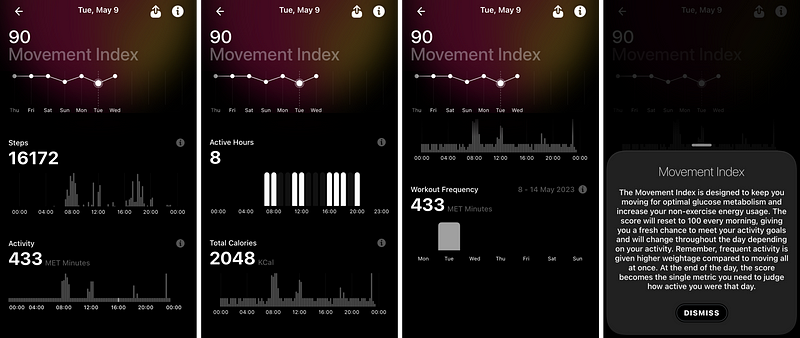
Recovery Score
The Recovery Score is somewhat analogous to the Readiness Oura ring. This statement is also supported by the usage of the following metrics:
- Lowest Heart Rate
- Average HRV
- Temperature
- and related contributors, see images below.
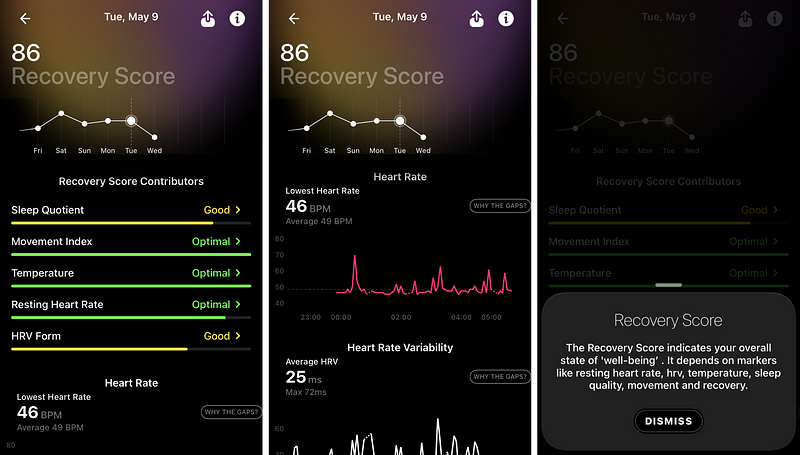
Sleep Score
Sleep offers a variety of metrics and contributors that are largely familiar from the Oura ring. For now, I offer an illustration in the form of screenshots below.

And I’ll add these insights as well:
- SPO2 — I get surprisingly low values, around 90%, Oura gives me 98–99%, so I think this functionality needs more tuning. The fact that it is currently in beta suggests this.
- Temperature — as I already announced, R1 works with absolute value. So my baseline is currently 35.38 °C. The other temperature interesting thing is that the ring measures temperature during the day, which is quite bold given the possible temperature interference.
- HRV — the HRV values are completely inconsistent with what is provided by Oura or e.g. the chest strap (when measuring at night). I was puzzled for a while why. Because R1 currently looks at HRV by calculating SDNN, while Oura looks at RMSSD. No point in dissecting the differences further, as the R1 should also go to RMSSD next firmware.
🆕UPDATE: Already at the time of revision of this article, a new firmware has landed in the ring/app promising:
- RMSSD method of HRV calculation,
- battery life optimization,
- improvements in SPO2 calculation
I will test the new firmware and elaborate on it in the full review of R1.
Beyond the sections above, I will highlight two more things that I evaluate very positively:
- Roadmap — it is not usual for a company of this size to publish its further development intentions. Ultrahuman is not afraid to do so — here.
- Personalized “human” recommendations — in fact, you can share data from the app with a “coach” and ask for feedback, recommendations, etc. in chat.
SW [-] & [+]
Below are the pros and cons that I now perceive most strongly in the case of the R1. I will elaborate on it in more detail in the full review.
[+] 👍
- good readiness of mobile app
- quality of verbal recommendations/insights
- fast data synchronization
- human support and promise of personalized recommendation
- weekly report in an e-mail
[-] 👎
- accuracy of sleep phases
- changed concept of HRV
- controversial concept of temperature monitoring
- absence of airplane mode
- absence of cloud
Evaluation
I’m trying to temper my enthusiasm, but I have to say now that if I’m currently looking for “Oura without subscription”, I would choose Ultrahuman. And that’s for the following reasons:
- Material and dimensions on level of Oura ring, as a bonus my preferred matte surface of the ring.
- The app has its issues (questionable SPO2 values in beta, underdeveloped temperature concept, confusing HRV calculations, sleep phases probably don’t reach the beta level of the Oura algorithm, absolutely now lacking period prediction for women), but it’s at a very decent level. In particular, I would pick up the verbal comments (which at the same time are now absent in the case of RingConn and partly Circular).
- The promise of crossover of data while using the full potential of the Ultrahuman ecosystem/platform of R1+M1.
- Customer service works in chat mode in Ultrahuman/Whatsapp and is actually quite human, which contrasts quite a bit with support for e.g. Oura ring, where I feel like it’s more AI🤖 answering me and forwarding snippets from their manual/web. Plus they are able to read user data to draw from. That’s how I envision the near future of personalized recommendations for the wearable electronics field (whether it’s made up of 👨 or 🤖).
I think I’ve written down enough of those impressions. If that wasn’t enough, you can look forward to more articles.
OURA 3 –40–50 EUR DISCOUNT — https://fitnesator.link/oura
CIRCULAR RING 8% DISCOUNT — https://fitnesator.link/circular
RINGCONN — https://fitnesator.link/ringconn
ULTRAHUMAN — https://fitnesator.link/ultrahuman
